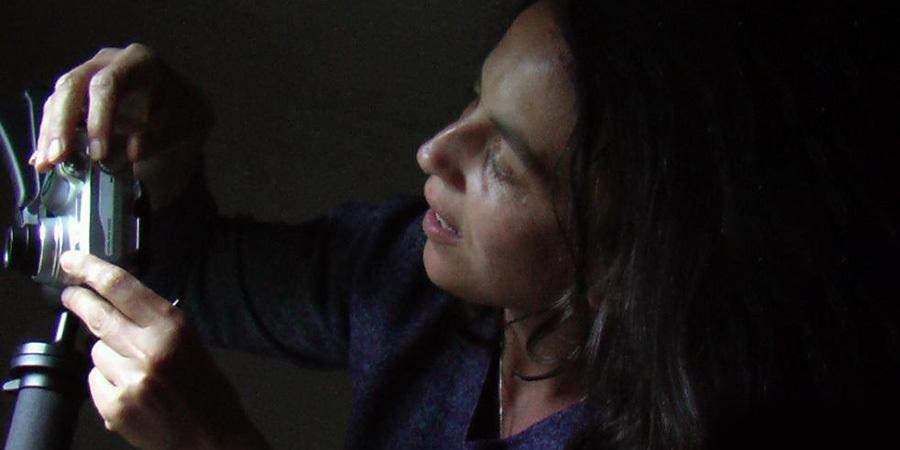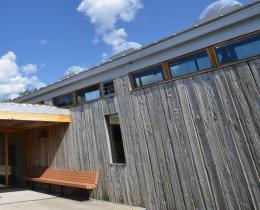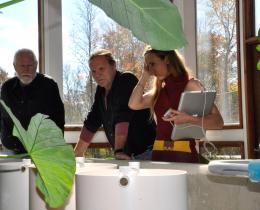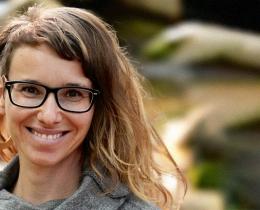Draga Šušanj was displaced once again. After nearly 25 years working as a professional artist in the US, she returned to the land of her grandfather—a vast mountaintop in Serbia—to complete an ecological art installation. Her vision was to form a residency program on her inherited land. Then the COVID-19 pandemic hit.
“I ended up staying here alone,” says Draga, who has made a living not only as a site-specific artist, but also as an educator, museum exhibit sculptor, and designer. “Stranded by the pandemic, I stayed in a dilapidated ancestral home without electricity and running water for 10 months."
Here, she continued the work she had started in New York with preserving seeds and began working with the Serbian species of wheat, wool, and healing herbs native to the land, making a series of large-scale photographs.
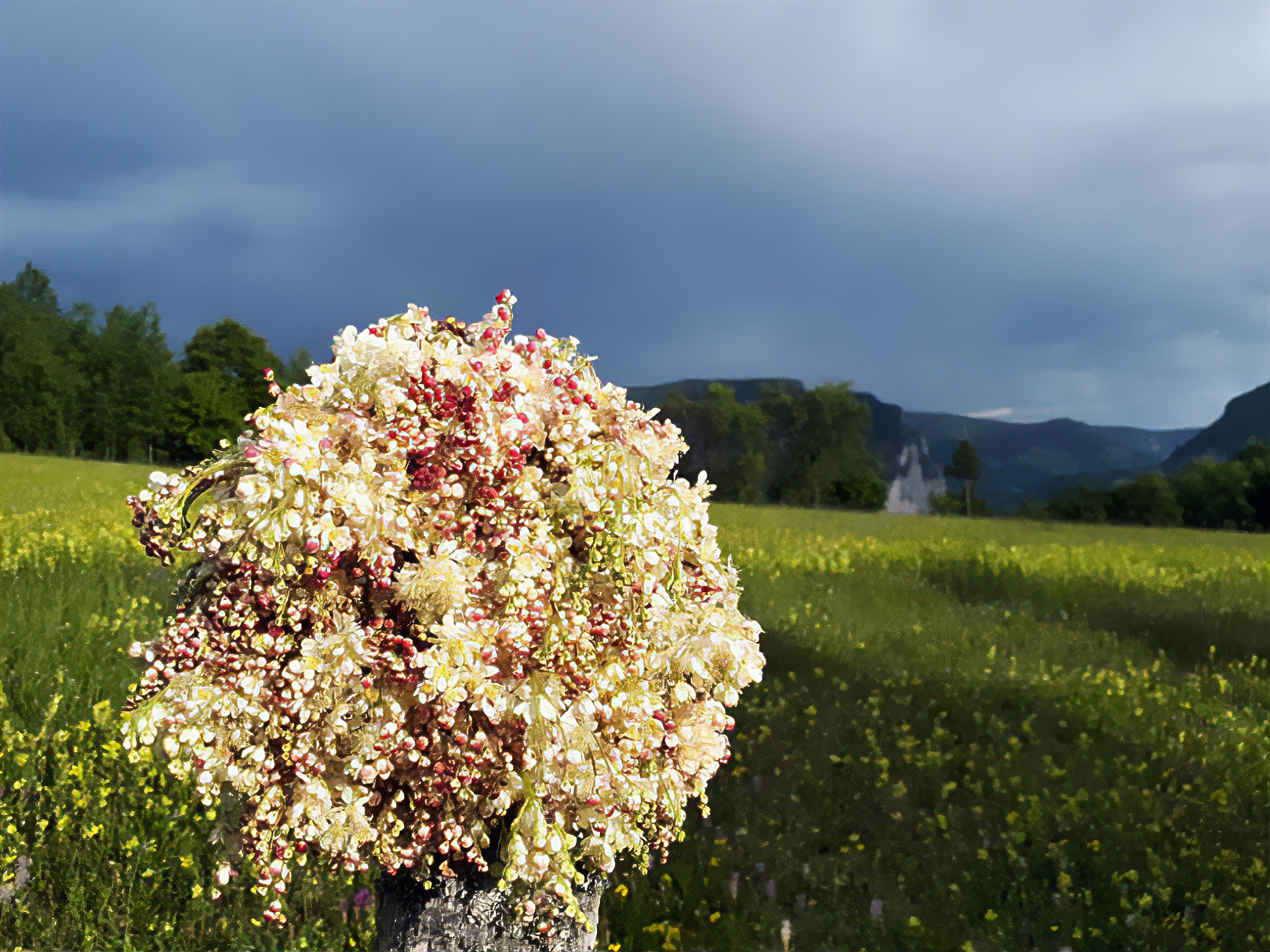
Eventually, the turmoil in the world pushed Draga to carry on her vision by herself, and she started the first stages of her social permaculture design project that she envisioned at Omega, called DISPLACE YOURSELF.
Draga was a resident in Omega’s Ecological Literacy Immersion Program (ELIP), where each participant completes a project to highlight permaculture, the conscious design of an ecosystem that has the diversity, stability, and resilience of natural ecosystems. Her project included a social component: to offer a holistic approach to a way of living and shared practices of environmental art to the Serbian people and internationally.
Draga managed cutting evergreen trees from the land. She treated the wood, and then used the lumber for her planned cabin structure. Even through driving rain and snow along the mountain, she implemented those first stages of the design project.
A Vast, Untouched Wilderness
DISPLACE YOURSELF originated from personal experience—how Draga's life had been impacted by the the war in Serbia—in juxtaposition to the immense beauty and rich resources she witnessed on this land.
“Serbia is a social conundrum, a postwar colonized society with an unhealthy economy and social structures,” Draga says. “Its people have been deeply affected by the NATO bombing in the spring of 1999. Yet, this land had offered sustainable life to generations of my family. It’s not polluted, so there is a great diversity of species and it’s set in beauty, a natural vastness. The land is potently beautiful and fertile, with self-sustainable but disappearing heritage."
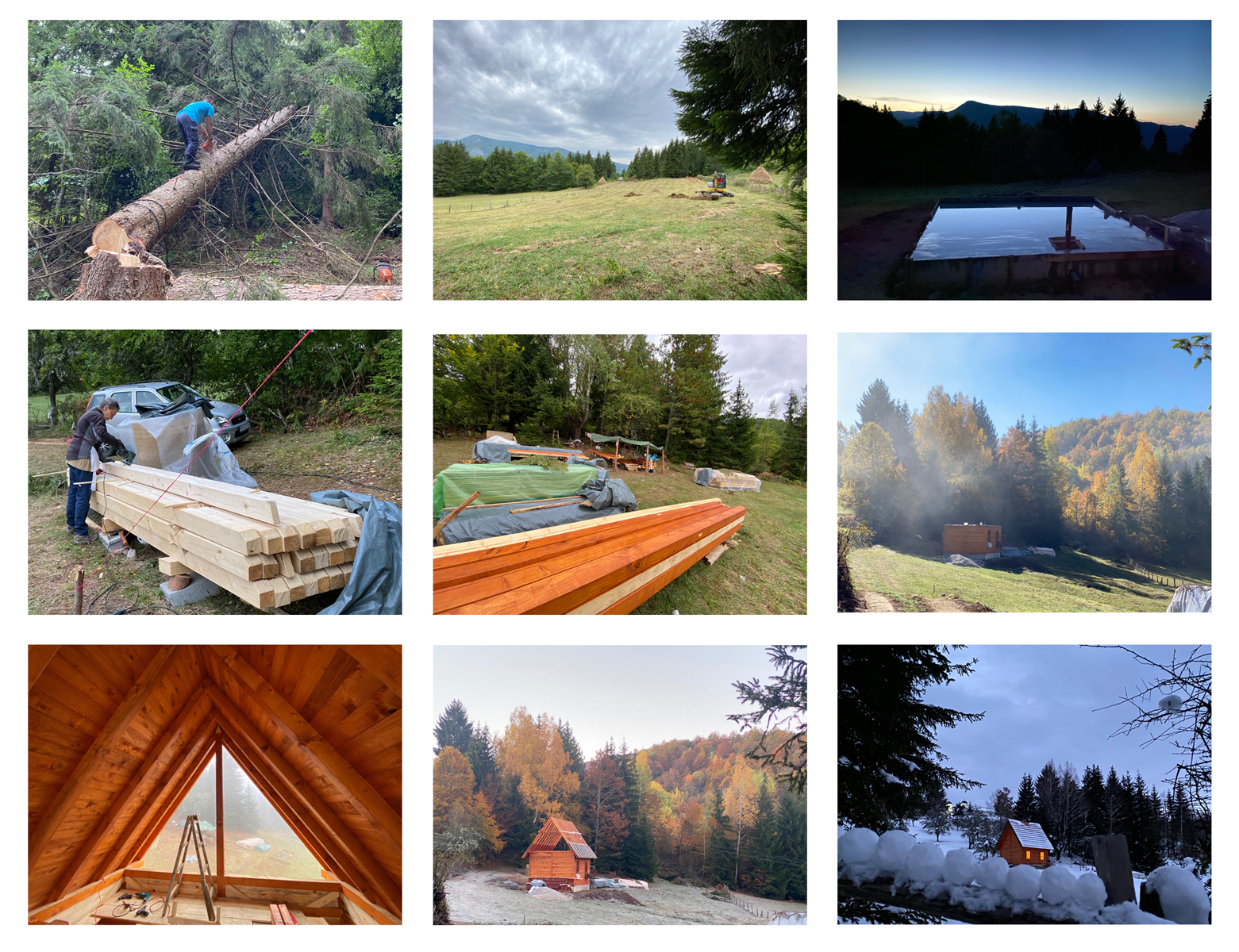
A Trailblazer Life
Toward the end of 2021, Draga moved into the cabin she designed and built single-handedly. That work includes digging a well and working on the interior, as well as construction of auxiliary buildings and gardening.
As she speaks over a shaky Zoom connection, the striations of the wood that she cut and treated create a frame around her. She still doesn’t have running water, but rejoices that she's connected to the internet. As a single woman, lacking connections to her art and community was a difficult transition, and women are still looked upon as subservient in this part of the world.
“Coming back to Serbia after more than 25 years of professional life in the States, I’ve felt displaced here as well, just as I did when I first moved to the US from Belgrade."
Playing With the Notion of Place
Draga came to the US during the war in former Yugoslavia. She graduated on scholarship from the School of the Art Institute of Chicago and Alfred University in New York, and began exhibiting her site-specific projects based on the socio-natural identity of each new place. Her residencies and exhibitions span the continent from the Midwest to California, from New York City to the Northwest. In fact, it has been said that Draga often plays with the notion of place in her work the way we occupy and assign meaning to a location—a sensitivity perhaps associated with her identity as an immigrant with dual citizenship.
Each passing year, Draga’s concerns about environmental pollution and climate change played a growing role in her work—regardless of borders.
“As an artist, I closely knit science with my art,” she says.
Just one example of an installation she did around climate awareness was her Honeycombed glass sculpture installation at the Glyndor Gallery in New York City, which echoed the plight of the disappearing honeybee. Art writer Ruth Reader says, "Viewing this piece through the lens of colony collapse may be a hindrance to seeing the deeper meaning at play… What Šušanj has built is a place, an abandoned place, and a place whose meaning is called into question because it no longer serves its original purpose."
We Belong to the Earth
What drew Draga to Omega? A passion to take a more activist role with her art.
“Before arriving at Omega, I longed to connect my art and activism, the two worlds I belong to,” she says.
Teachings from ELIP teachers Abrah Dresdale and Connor Stedman about practical frameworks for action had a lasting impact. One of the most reverberating benefits was connection to a like-minded community.
"What’s nurturing to me still," she says, "is the teaching of indigenous changemakers Dr. Sherri Mitchell and Sachem Hawkstorm that humans belong to the earth. So often, the European mentality or belief is the opposite: that the earth belongs to us.”
Draga is now focused on fundraising, grant applications for DISPLACE YOURSELF, and reconnecting with her professional network in the US. She's forming a board of directors so that the project can take root with practices such as consulting, teaching, art and ecology, farming, and food sales.
You can help by purchasing Draga Šušanj artwork prints to finance the project completion for DISPLACE YOURSELF.
